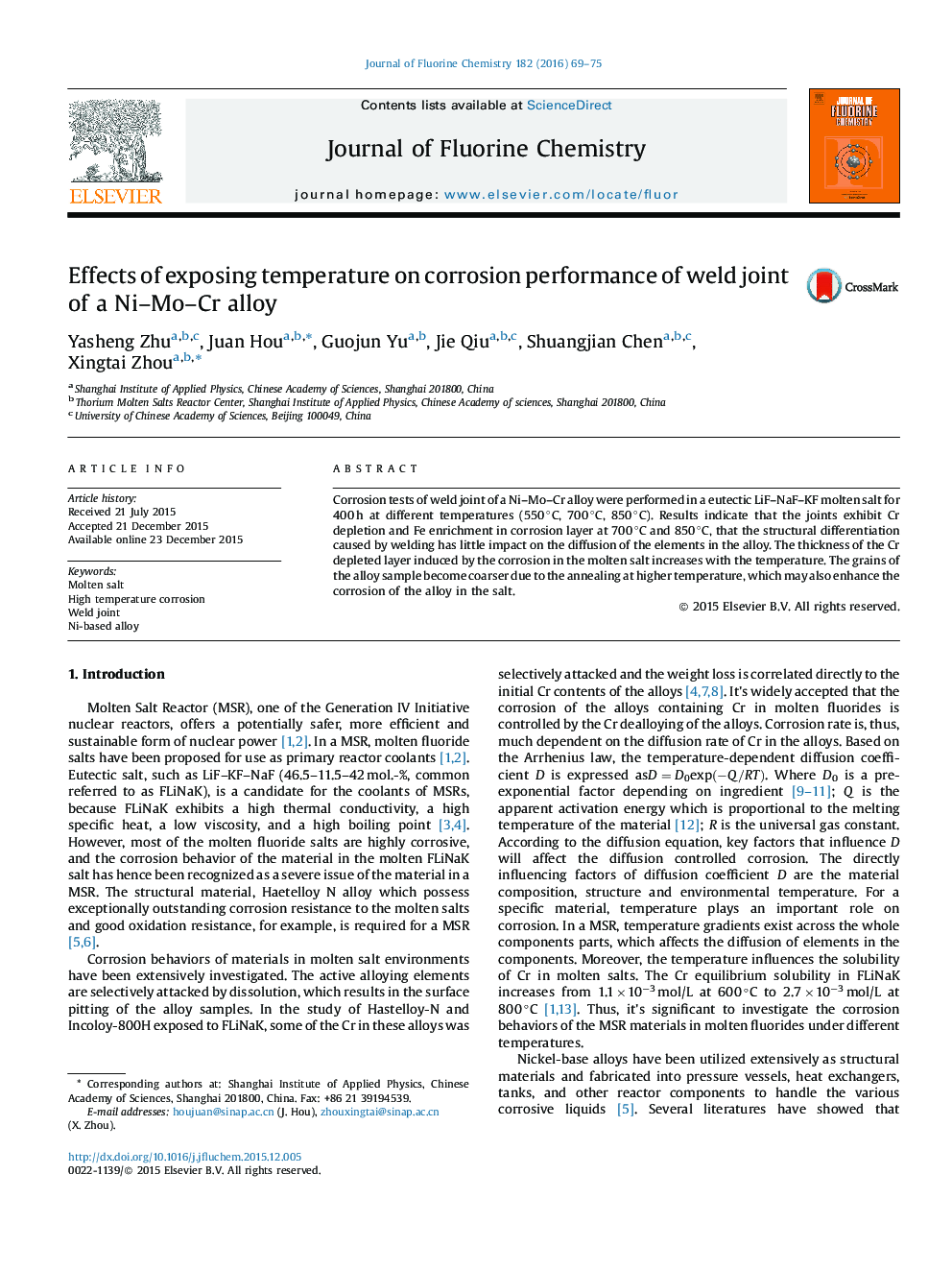| کد مقاله | کد نشریه | سال انتشار | مقاله انگلیسی | نسخه تمام متن |
|---|---|---|---|---|
| 1313555 | 1499318 | 2016 | 7 صفحه PDF | دانلود رایگان |
• Corrosion tests of weld joint of a Ni–Mo–Cr alloy were performed in a eutectic LiF–NaF–KF molten salt.
• The joints exhibit Cr depletion and Fe enrichment in corrosion layer at 700 °C and 850 °C.
• The thickness of the Cr depleted layer induced by the corrosion in the molten salt increases with the temperature.
Corrosion tests of weld joint of a Ni–Mo–Cr alloy were performed in a eutectic LiF–NaF–KF molten salt for 400 h at different temperatures (550 °C, 700 °C, 850 °C). Results indicate that the joints exhibit Cr depletion and Fe enrichment in corrosion layer at 700 °C and 850 °C, that the structural differentiation caused by welding has little impact on the diffusion of the elements in the alloy. The thickness of the Cr depleted layer induced by the corrosion in the molten salt increases with the temperature. The grains of the alloy sample become coarser due to the annealing at higher temperature, which may also enhance the corrosion of the alloy in the salt.
Corrosion tests of weld joint of a Ni–Mo–Cr alloy were performed in a eutectic LiF–NaF–KF molten salt for 400 h at different temperatures (550 °C, 700 °C, 850 °C). Results indicate that the joints exhibit Cr depletion and Fe enrichment in corrosion layer at 700 °C and 850 °C. The thickness of the Cr depleted layer induced by the corrosion in the molten salt increases with the temperature and the structural differentiation caused by welding has little impact on the diffusion of the elements in the alloy.Figure optionsDownload as PowerPoint slide
Journal: Journal of Fluorine Chemistry - Volume 182, February 2016, Pages 69–75
